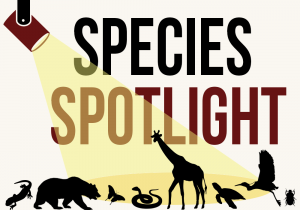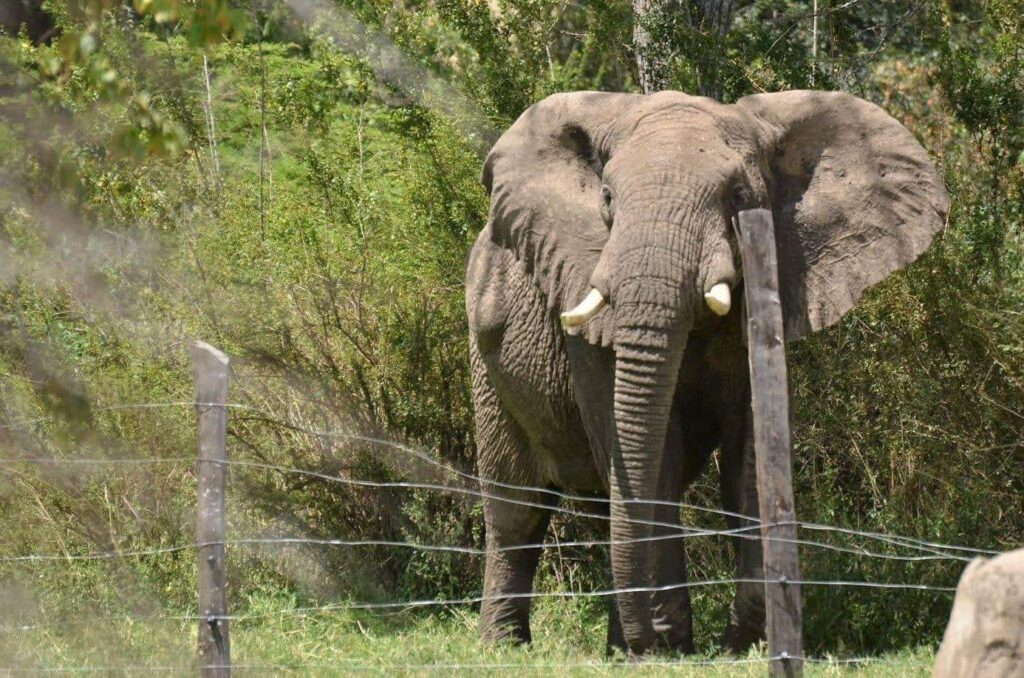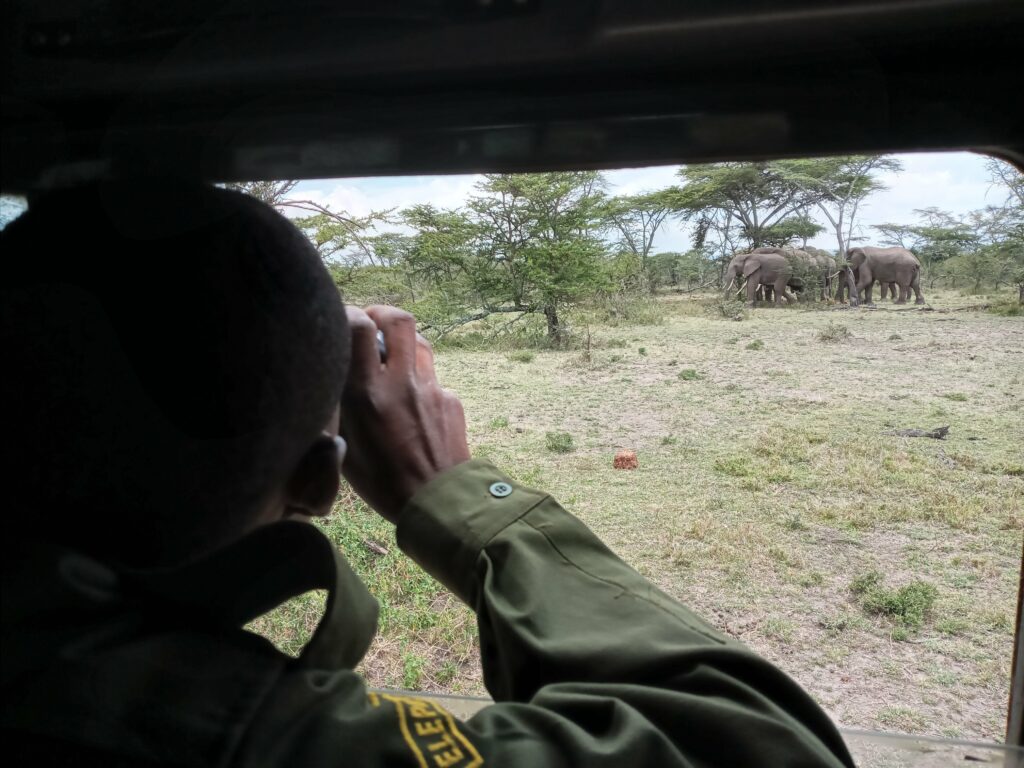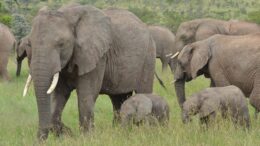 Species name:
Species name:
African savanna elephant (Loxodonta africana)
Description:
African savanna elephants are one of the most iconic species on the planet with their enormous stature, big ears, long tusks, and of course unmistakable trunks. They’re the largest species of elephant and the largest extant land mammal.
IUCN Red List status:
Endangered.
Where they’re found:
The current range of African savanna elephants extends across parts of 23 African countries, including the Maasai Mara ecosystem in southwest Kenya. This large expanse of wilderness is interspersed with human settlements belonging to the Maasai people.
Nestled within the ecosystem is the world-renowned Maasai Mara National Reserve, and nearby across the border in Tanzania is the equally famous Serengeti National Reserve. Often viewed as one whole and very large ecosystem, both areas are a crucial haven for many species of wildlife, including elephants.
Major threats:
The most significant threats to the elephants include poaching, hunting, habitat loss and, increasingly, conflict with people. Around 70% of wildlife exists outside of protected areas in Kenya, and in the Mara ecosystem many species, including elephants, live outside the reserve and in between conservancies.
In recent years the Mara ecosystem has undergone many changes as land laws and land-use practices in Kenya have changed. Where there were previously “group ranches” — communally owned areas — in this region, there are now individual plots of land where landowners have erected fences. Many of the parcels exist within or border on the habitat of elephants.

Since the emergence of fences, incidents of human-elephant conflict have spiked and natural corridors that elephants once used have been blocked. Elephants often find themselves in the crosshairs of conflict when they try to follow traditional routes — or they raid agricultural crops, devastating human livelihoods.
These conflicts often result in terrible tragedy for both people and elephants.
Notable conservation programs or legal protections:
With the exception of four southern African countries, the Convention of International Trade in Endangered Species lists both species of African elephants on Appendix I, prohibiting all trade pertaining to the species. In Botswana, Namibia, South Africa and Zimbabwe elephants are included in CITES Appendix II, which means the animals there are “not necessarily now threatened with extinction,” but could be without strict trade regulations.
My favorite experience:
There are so many amazing elephant experiences my team and I have had over the years. But one forever changed how I look at elephants, and it has invigorated my passion for their conservation.
In September 2017 we found a tuskless matriarch, Nalakite, our team knew well. She was very sick as a result of a spear injury.
The Mara Mobile Veterinary Unit was called in on two occasions and worked tirelessly with our team to save her. She had become separated from her herd due to her weak state, but her three calves remained by her side. Sadly, when Nalakite went into a mud wallow one day, she couldn’t get up again, and despite our collective teams working for more than 10 hours to free her, she eventually succumbed to her condition.
All of us observed quietly as the calves grieved for their mother, refusing to leave her side even when predators approached. The emotions this family of elephants were experiencing was obvious and heart wrenching.
What else do we need to understand or do to protect this species?
Global awareness, in tandem with conservation efforts at the local and government level, are crucial components in protecting African savanna elephants and ensuring their future in the wild.

This should include prioritizing the needs of the Maasai people who own the land, ensuring there are long-lasting mutual benefits, as well as securing wild habitat and linking protected areas through the establishment of designated land for corridors.
There are a number of organizations actively combating human-elephant conflict. Elephant Aware, a project in the Mara ecosystem where I work, uses a method referred to as “gentle persuasion,” which incorporates patience and collaboration with landowners to resolve incidents of human-elephant conflict.
This is especially crucial in situations where elephants get stuck in fences, which can turn dangerous very quickly without intervention. The Elephant Aware team, which includes Maasai rangers, must keep community members a safe distance away to allow the elephant(s) to get out of the fences peacefully. The rangers also monitor different herds of elephants every day to prevent conflict before it happens.
Previously in The Revelator:
Another Reason to Protect Elephants: Frogs Love Their Feet
![]()


